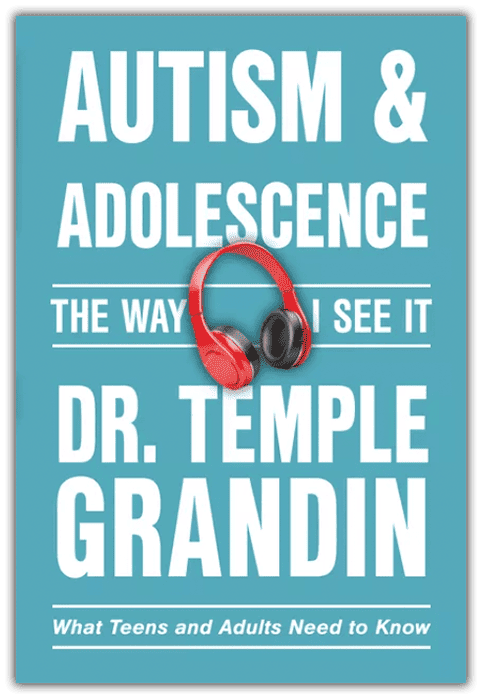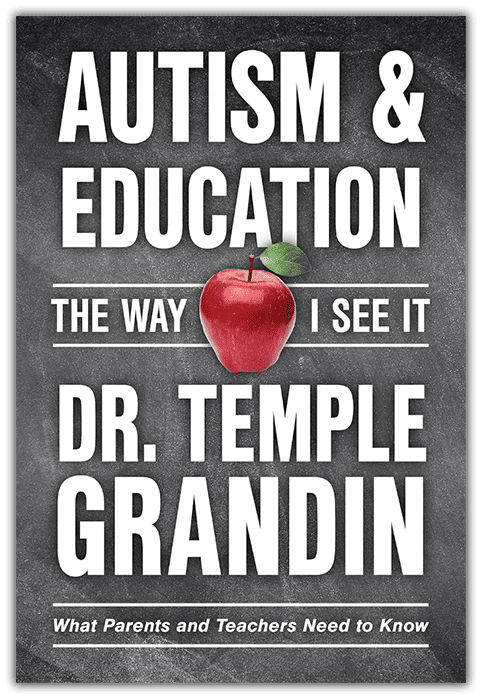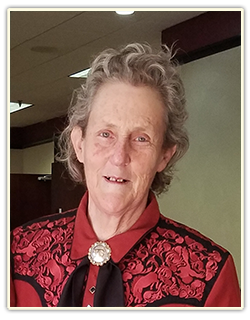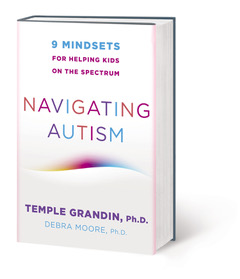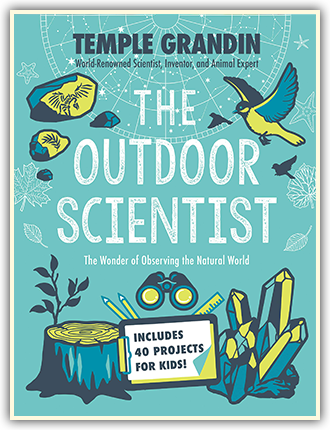
Webinars & Conferences
Upcoming Conferences
July 29 - Denver, CO
August 14 - Hershey, PA
August 18 - Webinar
August 20 - New Orleans, LA
August 23 - Flint, MI
September 10 - Dallas Forth Worth
September 11 - Knoxville, TN
September 15 - Missoula, MT
September 19 - Cincinnati, OH
November 19 - Memphis, TN
November 20 - Jonesboro, AR
A MUST LISTEN!!
Temple's Latest Books!
Temple Grandin earns Dole Leadership Prize!
NAVIGATING AUTISM
"The Outdoor Scientist"
Tips for Success in Academia
When You Are Differenet
I learned a lot by reading my student evaluations of my teaching. There are two kinds of critical evaluations. They are: 1) Ones that provide constructive suggestions on how to improve my teaching and 2) Nasty comments. I learned that I had to disregard the nasty comments and learn from the constructive criticism. Early in my career a student who was in more than one of my classes commented that I always gave the same lecture. The mistake I had made was using the same introductory slide for two different lectures in the two classes. I immediately made the introductory slides different.
In any job, it is important to keep copies of all your annual evaluations. Building your portfolio is also important. In academia published scientific papers are a major part of your work but there is often other work that is not formally published. If you have built a really innovative piece of equipment, make sure you photograph it. Other work you should keep copies of are: grant proposals computer code, scientific data, statistics programs, artwork, and drawings. Since I was weird, I had to sell my work and not myself. In my consulting work, I sold my services as a livestock equipment designer by showing photos of completed projects and drawings.
I recommend keeping paper copies of your most important work that has not been published in either the formal academic literature or in a book. Electronic formats keep changing and ten years from now, it may be difficult or impossible to retrieve the material. Print out photos and drawings on high quality paper and protect them from light. Keep a hard copy of your best work at BOTH your office and at home. We had a flood on our campus and both students and faculty had research work destroyed. The materials you save can be used to make a portfolio if you ever need to get a new job. The portfolio can also be used to show your work if you get into a conflict with your boss or colleagues.
Getting Along with Colleagues
When I worked on a team project, I learned that it is best for me to have a well-defined piece of project that is my responsibility. The scope of my area of responsibility should be defined at the beginning of the project. For example, I will write this specific section of the paper and get it done by a certain date. My colleagues on a jointly written report sometimes made mistakes. I learned never rub their noses in them by calling them stupid. I worked on one project where I quietly corrected the mistakes that others had made. Our jointly authored scientific paper was successful. One must remember that the goal is to produce a good publication.
To get along with colleagues, you have to make a decision about where your life is going to lead. Is political advocacy your main goal in life or is it professional success? Being successful at both is almost impossible. You have to make a decision on what is most important to you. In conclusion, you must always do your job with integrity.
Publications that May be Helpful
Grandin, T. (2006) Thinking in Pictures, Expanded Edition, Vintage Press, Random House, New York.
Grandin, T. and Panek, R. (2013) The Autistic Brain, Houghton Mifflin Harcourt, New York, New York.
Grandin, T. and Barron, S. (2005) The Unwritten Rules of Social Relationships, Future Horizons, Arlington, TX.
About Temple Grandin
Dr. Grandin did not talk until she was three and a half years old. She was fortunate to get early speech therapy. Her teachers also taught her how to wait and take turns when playing board games. She was mainstreamed into a normal kindergarten at age five. Oliver Sacks wrote in the forward of Thinking in Pictures that her first book Emergence: Labeled Autistic was “unprecedented because there had never before been an inside narrative of autism.” Dr. Sacks profiled Dr. Grandin in his best selling book Anthropologist on Mars.
Dr. Grandin became a prominent author and speaker on both autism and animal behavior. Today she is a professor of Animal Science at Colorado State University. She also has a successful career consulting on both livestock handling equipment design and animal welfare. She has been featured on NPR (National Public Radio) and a BBC Special – "The Woman Who Thinks Like a Cow". She has also appeared on National TV shows such as Larry King Live, 20/20, Sixty Minutes, Fox and Friends, and she has a 2010 TED talk. Articles about Dr. Grandin have appeared in Time Magazine, New York Times, Discover Magazine, Forbes and USA Today. HBO made an Emmy Award winning movie about her life and she was inducted into the American Academy of Arts and Sciences in 2016.
When she was young, she was considered weird and teased and bullied in high school. The only place she had friends was activities where there was a shared interest such as horses, electronics, or model rockets. Mr. Carlock, her science teacher, was an important mentor who encouraged her interest in science. When she had a new goal of becoming a scientist, she had a reason for studying. Today half the cattle in the United States are handled in facilities she has designed.
